Believe it or not, we’ve been in Namibia 4 days now and still haven’t been online. The internet wasn’t working in town the day we arrived and the road trip we just returned from didn’t give us the opportunity to get on line either, but hopefully tomorrow we’ll have some pictures of Namibia to put up. For now, you’ll have to take our word for us that Namibia has one of the most stunning landscapes we’ve ever seen.
To backtrack just a little bit, we dropped anchor on Sunday evening and made it into the yacht club before sunset where we intended to have a shower and then head back to the boat for dinner and a full night’s sleep. Unfortunately, the yacht club bar was filled with tuna fishing boat captains and they lived up to their reputation. We’d didn’t make it back to the boat until we’d been the recipients of about half a dozen rounds on Captain DJ.
We woke up early and full of energy after good night’s sleep and had another nice surprise. The French guys on RDJ were just entering the anchorage. We were glad to see them and it meant we’d won a race for the first time. Romain had bet me 4 rounds of beers for all crew on board that they would beat us to Luderitz. Even though they’re a heavy steel monohull, they’re able to retrieve ocean current information at sea, we’re not all that fast, and I’m generally pretty conservative (or lazy) about the amount of sail we have up, so I wasn’t holding out any hope of beating them. As it turns out, they were able to find a good current and had a higher average speed, but they had to go so far offshore to find it that we beat them in. Lauren volunteered to make crepes for everyone for breakfast so I ferried them over and we all enjoyed a 5 star crepe breakfast and had a good laugh at how much better Lauren was at making crepes (her first time) than the French captain.
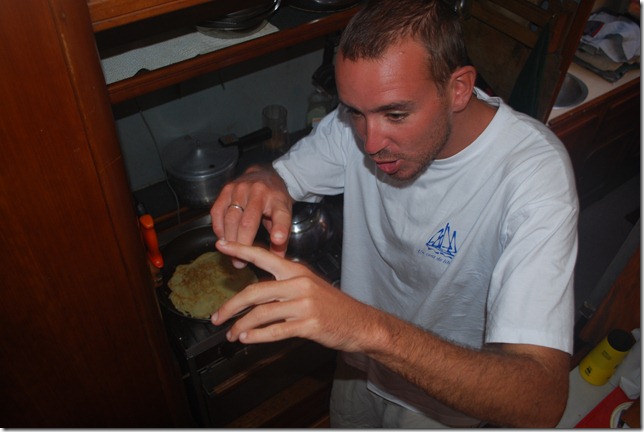 Romain explaining that round crepes are boring and crepes in the shape of countries are much cooler
Romain explaining that round crepes are boring and crepes in the shape of countries are much cooler
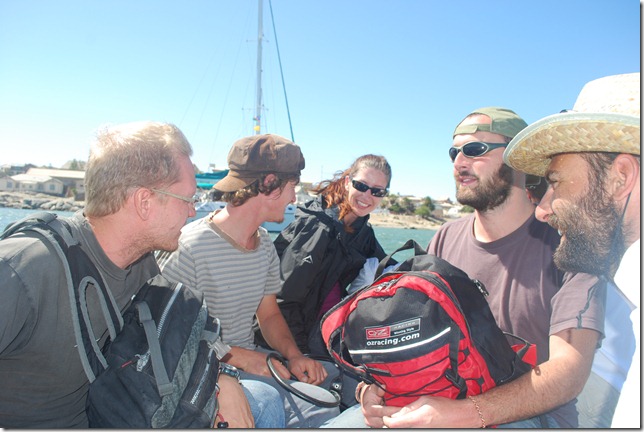 RDJ doesn’t have an engine for their dinghy, so we were the taxi in often windy Luderitz
RDJ doesn’t have an engine for their dinghy, so we were the taxi in often windy Luderitz
The rest of the day was spent checking in (quick, easy and very, very friendly although we were boarded to check for stowaways), getting a local SIM card, and trying to find a rental car. There’s no longer any airline service to Luderitz and the new railway here isn’t finished yet, so although there are both Avis and Budget in town, they often don’t have any cars available as there isn’t much demand. We were hoping to get a 4×4 and travel with RDJ but we ended up with the only rental available in town — a small 4-door VW hatchback so we travelled on our own while RDJ got a head start on the passage to St. Helena. RDJ had us over for a farewell dinner and treated us to several delicious tuna dishes courtesy of the large tuna they hooked on the way here.
Early Tuesday morning I picked up the rental car and we loaded it up with food and a few meager camping supplies. Being pretty budget-minded, we were planning to skip the expensive lodges and go for sleeping under the stars or in the car at a campsite. Our destination was Sossusvlei, home to beautiful red sand deserts that boast the largest dunes in the world. The 6 months of driving on the "wrong" side of the road came in handy as they do the same here and the car was a manual.
Our first stop was Kolmanskop, a diamond mining ghosttown in the desert just out of town. In 1908, a German railway inspector discovered the first diamond in this area. Southwest Africa, as Namibia used to be called, was a former German colony that was given to South Africa to administer after World War II and was the last African state to gain independence. At the time, the Germans were building a railroad to move troops and equipment from the port of Luderitz to points farther inland, but diamond mining soon became much more important. Even today large portions of the southern coastal region of Namibia is completely off-limits due to diamond deposits and mining and even the waters offshore are restricted as the sea bed is being mined for diamonds.
When they were first discovered, the diamond fields near Kolmanskop were some of the richest in the world — at one point the original diamond discoverer August Stauch sat down and picked up 421 diamonds in one spot. There were so many laying on the desert surface that workers would make a line and lay on their stomachs on the ground, inching forward as they searched the sand in front of them. Their mouths were covered with cloth masks while they worked to prevent them from swallowing diamonds. To prevent theft by workers, the 800 indigenous workers at the mine were required to sign on to work for 2 years without ever leaving the mine grounds. Two weeks before their contract was up, they were transferred to a quarantine facility where they were given healthy doses of Castor oil and used latrines with mesh screens that would catch diamonds while passing waste. Because of their familiarity with the site they were only allowed to work one 2-year term.
The profits from the mine allowed a pretty extravagant lifestyle for the German mine managers and workers. They had a bowling alley, fresh water shipped in from Cape Town, an ice factory, a butcher, a swimming pool, a casino and entertainment hall that hosted world-class performers, a small train that acted as a public transit and ice delivery vehicle, and a hospital with the first X-ray machine in southern Africa (very useful for spotting hidden or swallowed diamonds).
When diamond deposits were found farther south that were more cost effective to mine, the boom ended and Kolmanskop eventually became a ghosttown. The dry desert conditions and strong German construction have left most of the buildings weathered but still standing, while the desert winds and sands have surrounded and in some cases partially filled them with sand drifts. Today they’re characterized by a picturesque and surreal group of decaying former mansions adrift in a sea of sand.
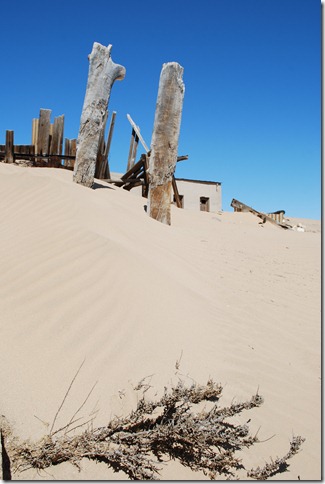 A barren but beautiful landscape
A barren but beautiful landscape
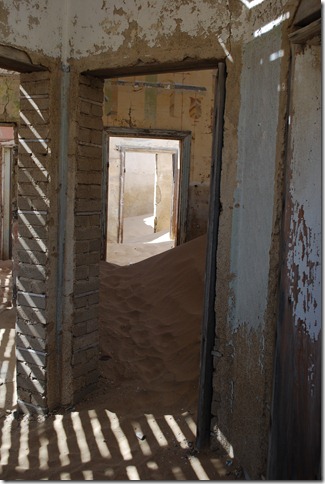 Sand fills many of the old mansions
Sand fills many of the old mansions
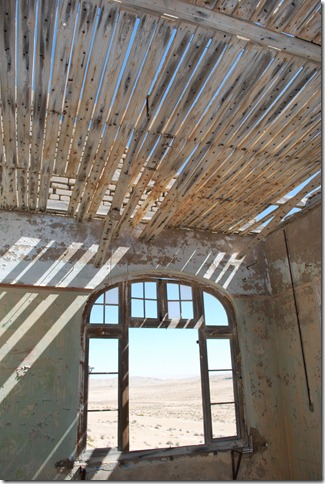 The houses are fun to explore, but are definitely “Enter at your own risk”
The houses are fun to explore, but are definitely “Enter at your own risk”
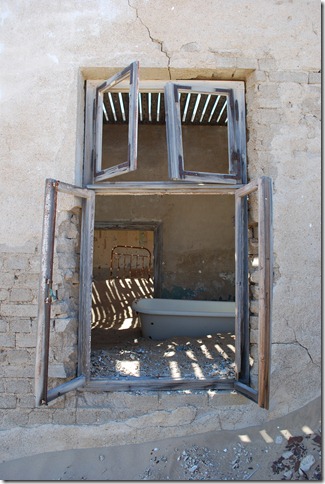 Apparently bathtubs aren’t in demand in the desert. Most were still there.
Apparently bathtubs aren’t in demand in the desert. Most were still there.
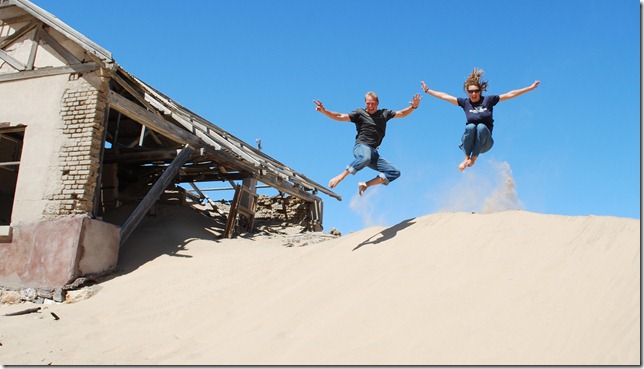 Adding a little life to the ghost town (thanks to Tracey for the pic idea)
Adding a little life to the ghost town (thanks to Tracey for the pic idea)
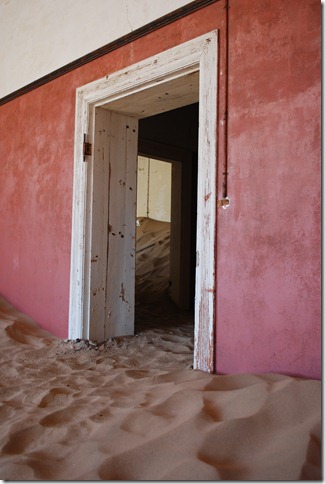 Even the paint and wall paper are still intact
Even the paint and wall paper are still intact
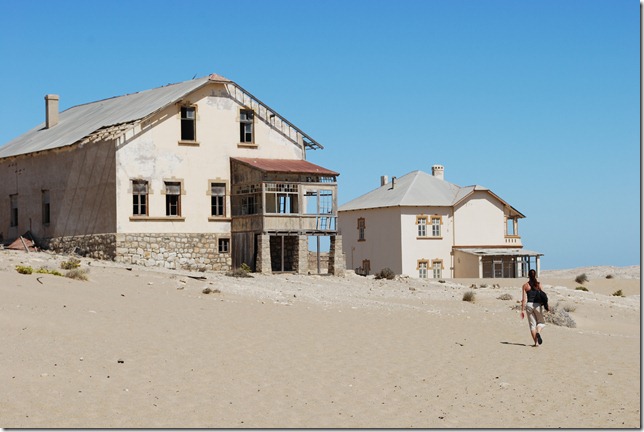 The building on the right has been renovated, but “Millionaire’s Avenue” is pretty dusty these days
The building on the right has been renovated, but “Millionaire’s Avenue” is pretty dusty these days
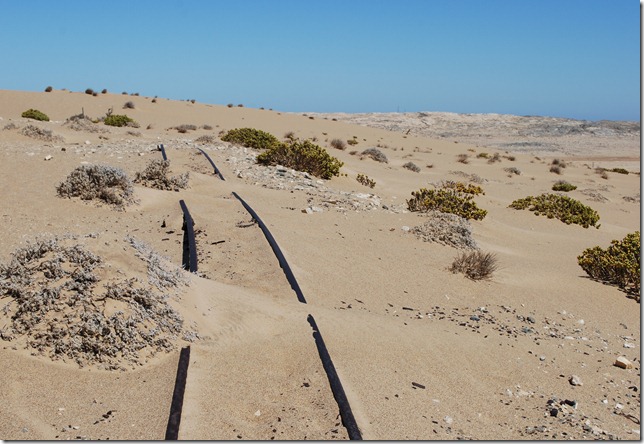 The seems to be the fate of many things in the desert…
The seems to be the fate of many things in the desert…
Our drive north to Sossusvlei as well as the rest of the road trip was nothing short of amazing, but that’s going to have to wait for tomorrow’s blog…

